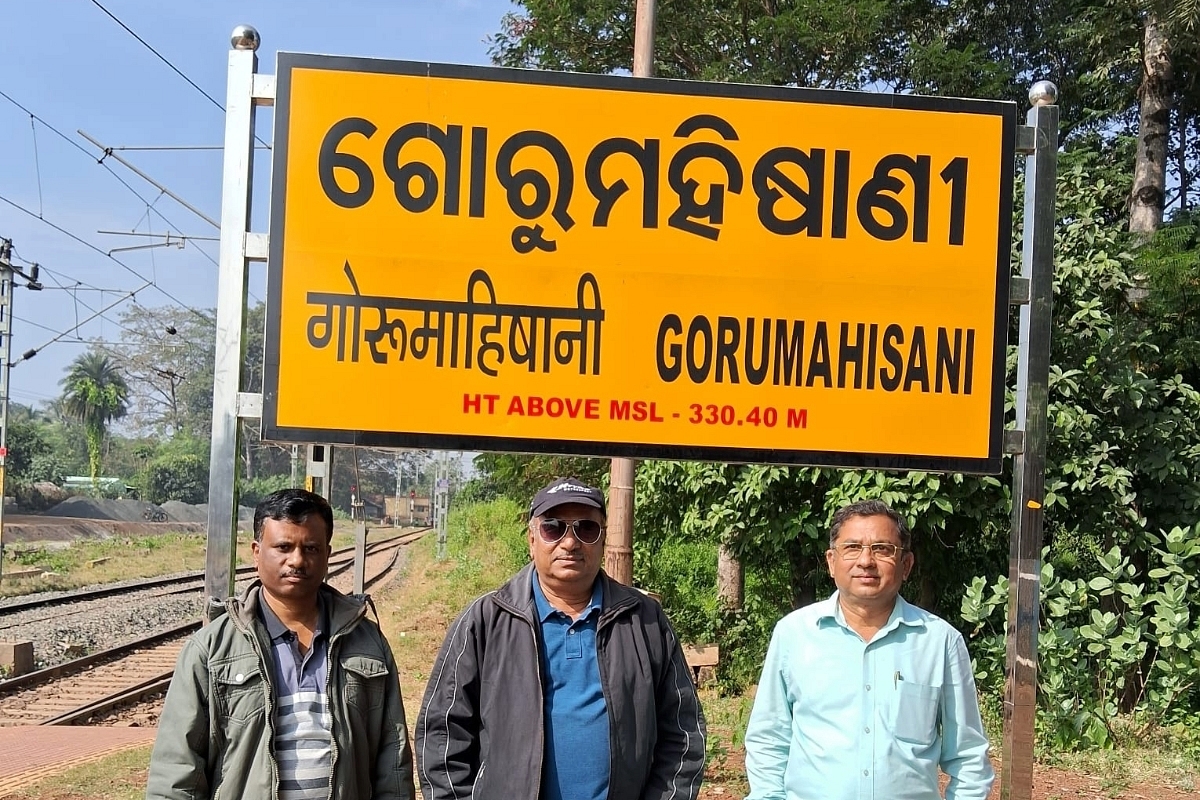Reports
Chugging Along A 112-Year-Old Railway Line With Rich Iron Ore Legacy — Ground Report From Tatanagar To GUMI In Odisha

Gorumahisani Station
There was little commotion at the platform as the last passenger train entered Gorumahisani station.
While many passengers boarded the eight-coach passenger train, many also disembarked at what was the last stoppage of the 64-km-long Tatanagar-Gorumahisani route.
Situated amid a forest and hills in the Mayurbhanj district of Odisha, Gorumahisani village is known for its rich iron ore reserve. In fact, India's first iron ore mines were developed here.
Also known as "GUMI," its railway station code, the Gorumahisani station was built more than a century ago.
Constructed in 1911 to connect the area for hauling iron ores to Tata Steel in Jamshedpur, Gorumahisani is only 16 kilometres (km) away from Rairangpur, the birthplace of President Droupadi Murmu.
Now, after more than a century, the railway line has become the lifeline for the region, as scores of passengers avail the train service and tonnes of iron ore are transported daily from here.
"Today, we have about 158 passengers. But the number could go up to 2,000 in some days like festivals," Ravi Roshan, the Station Master for Gorumahisani, said.
There are a total of five staff members, including the deployment of a station master by the Railways, to keep the century-old, remote rail premises alive in the region.
Though the station is small, it offers a wide range of facilities for the convenience of passengers, including ticket counters, waiting rooms, food stalls, and restrooms.
The first passenger train arrives in the morning, at 7.35 am, while the second and last passenger train for the day is scheduled for 11.30 am.
While there are only two passenger trains that come to the station daily, the movement of many iron ore rakes on the other side of the platform is continuous throughout the day.
Every Tuesday, there is a rush of passengers as the area haat (village bazar) is functional on this day, the station master told me.
With the passage of time, though Tata has left the mining operation in the area, other private players have joined the business.
Some 20 rakes of iron ore are transported from GUMI in a month. One rake consists of 52 wagons.
India's first iron ore mines were developed here by Maharaja Sriram Chandra Bhanj Deo, ruler of the then princely state of Mayurbhanj.
Deo appointed Pramatha Nath Bose, a leading geologist, in 1908 to survey the ore deposits. After the positive result, the tribal region became the site of the first iron ore mines in the country.
Later, the mines were leased to Tata Steel.
Currently, there is a memorial built in the memory of Bose at the top of the Gorumahisani hills, with a plaque bearing his name.
There, atop the hills, is a long, pillar-type construction with a large iron ore placed above and Bose's plaque below. The site is a picnic spot now.
Presently, other private players are involved in mining the area, as Tata Steel is no longer procuring iron ores from here.
From the platform, one can witness the hectic mining work involving the loading and unloading of ores by nearly 20 dumpers.
The mining work starts around 7 am, and the last loading is at 5 pm, said Biman Biswal, the mining manager. Besides the mining pit and quarry, there are rest shelters for mining workers.
Mining activities remain closed on Tuesdays because of the weekly bazaar.
Earlier, bullock carts were used for transporting iron ores; now, modern machinery is in place to do the loading job.
First, it was a narrow-gauge line, later converted to broad gauge, said a station staff. "My father used to tell us about the train movement on narrow gauge. But now, everywhere it is broad gauge and speed has also gone up."
Gorumahisani, or GUMI, under the Chakradharpur division, falls under the jurisdiction of the South Eastern Railway Zone.
The Chakradharpur Division recently undertook a massive exercise to facilitate the launch of three new trains by President Murmu in the Tata-Badampahar sector, for which rail tracks were strengthened to raise the train speed.
Support Swarajya's 50 Ground Reports Project & Sponsor A Story
Every general election Swarajya does a 50 ground reports project.
Aimed only at serious readers and those who appreciate the nuances of political undercurrents, the project provides a sense of India's electoral landscape. As you know, these reports are produced after considerable investment of travel, time and effort on the ground.
This time too we've kicked off the project in style and have covered over 30 constituencies already. If you're someone who appreciates such work and have enjoyed our coverage please consider sponsoring a ground report for just Rs 2999 to Rs 19,999 - it goes a long way in helping us produce more quality reportage.
You can also back this project by becoming a subscriber for as little as Rs 999 - so do click on this links and choose a plan that suits you and back us.
Click below to contribute.
Latest